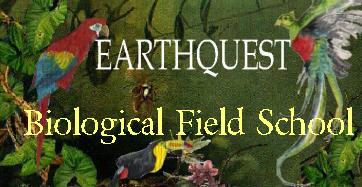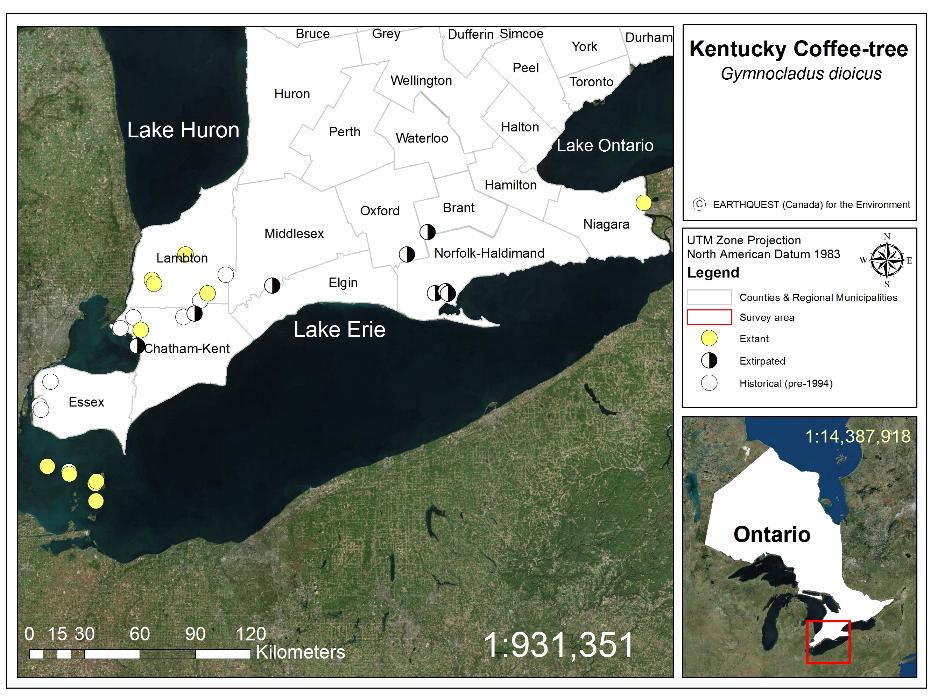
Spring | |||||
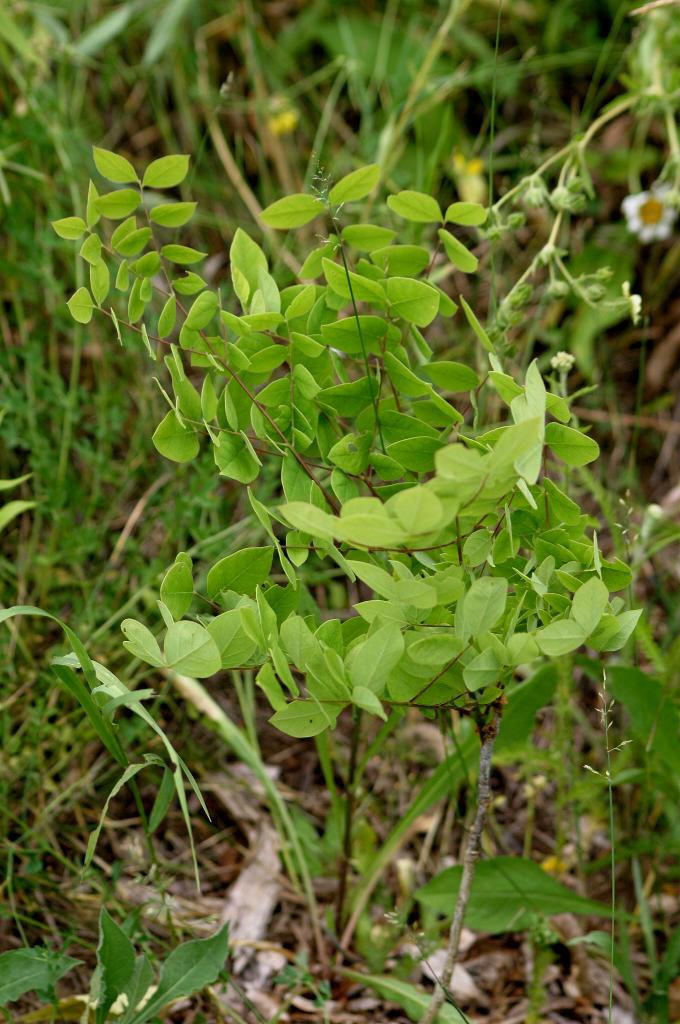 |
|||||
Summer | |||||
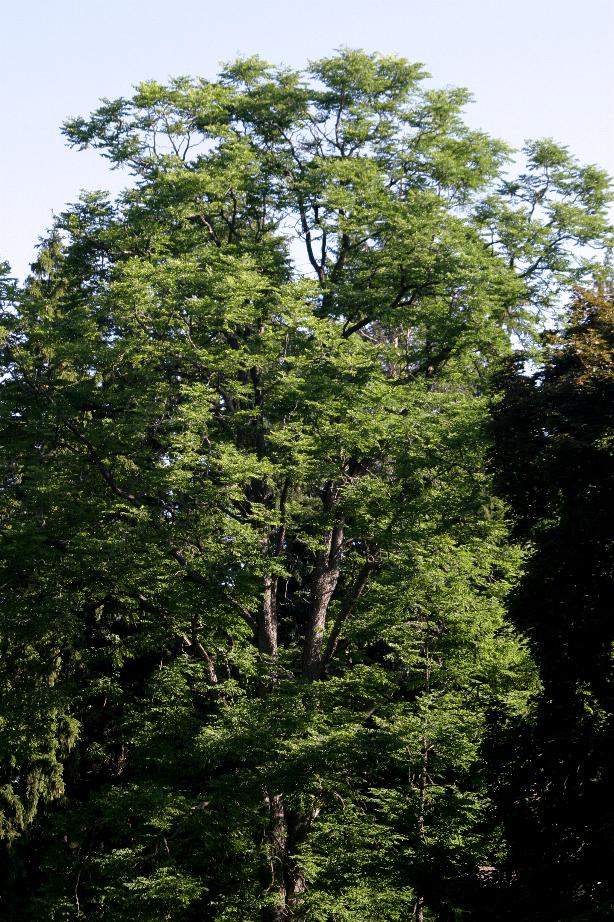 |
Leaf
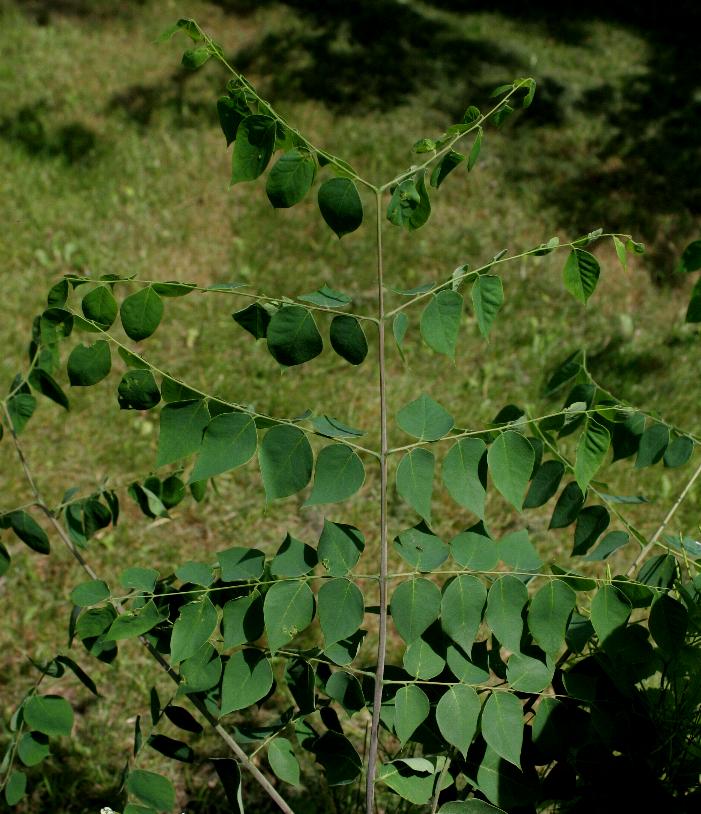 Photo: Dave Jolly | Buds
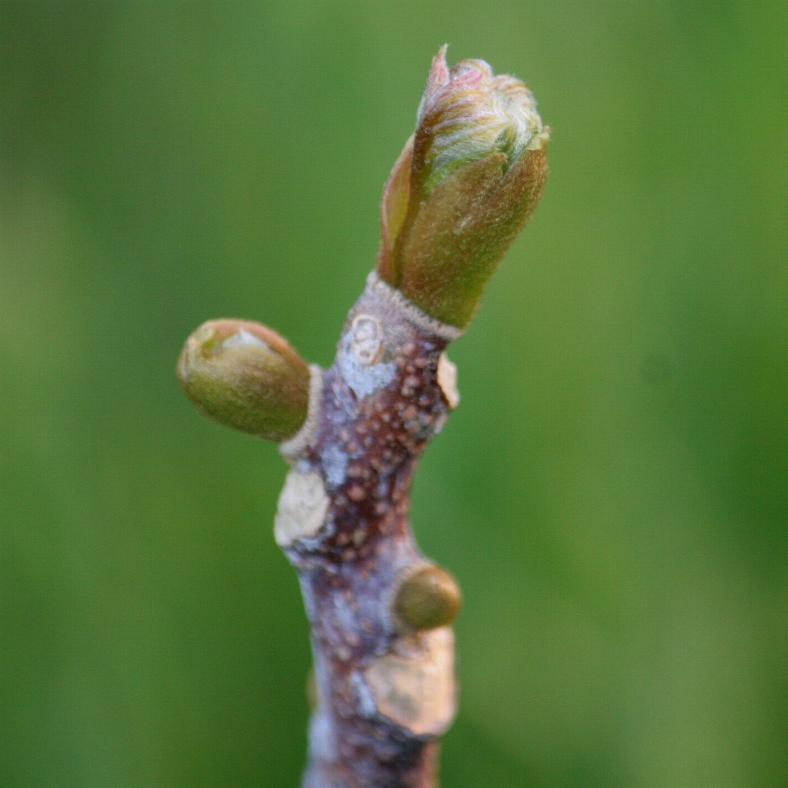 Photo: Dave Jolly | Flowers
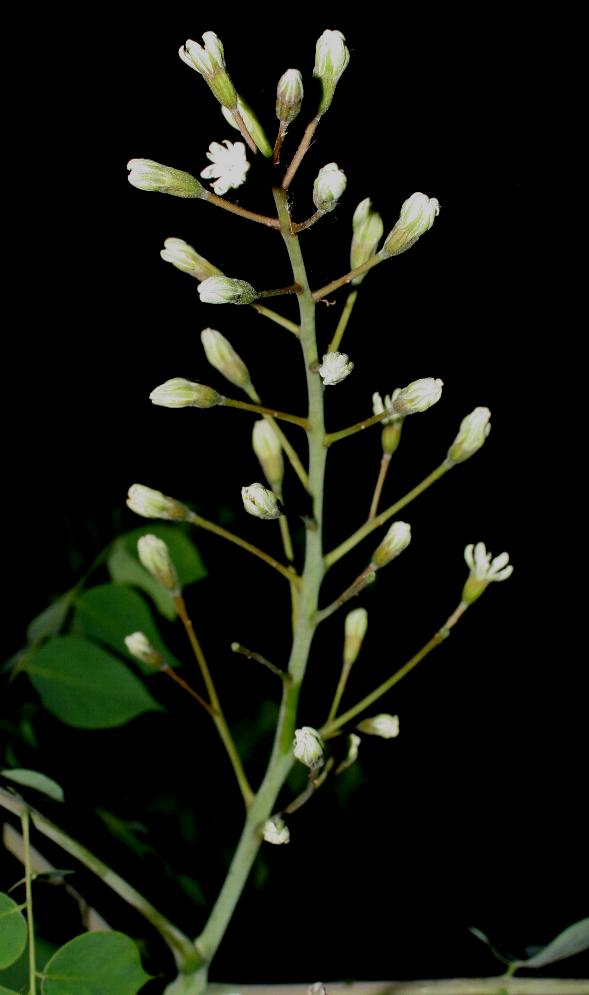 Photo: Dave Jolly |
||
Fall | Seed pods
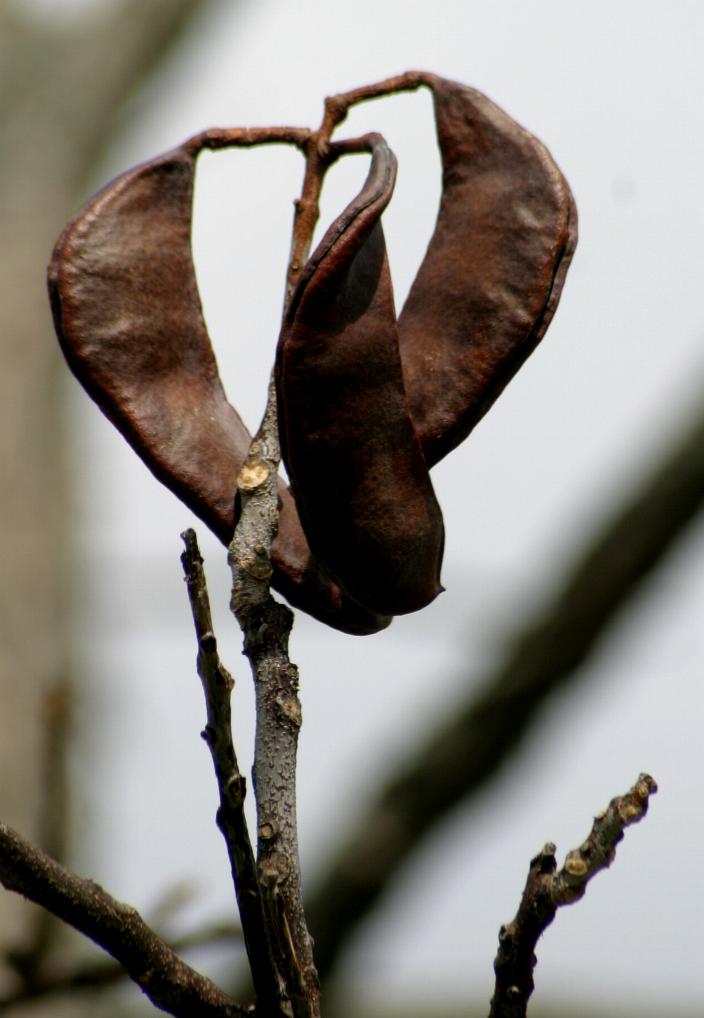 Winter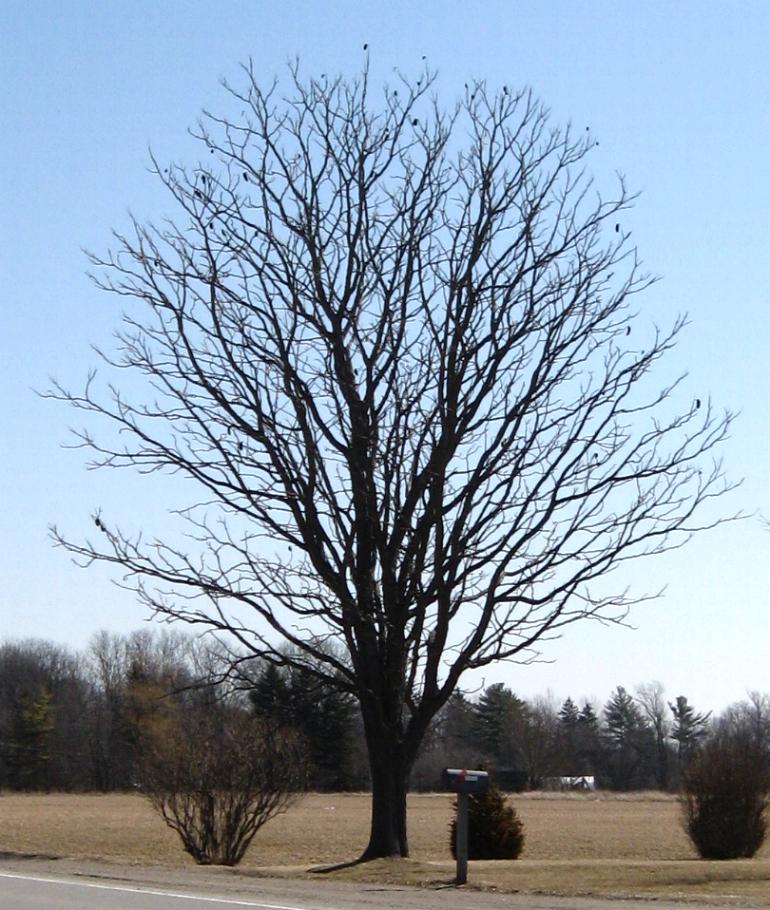 Bark
| 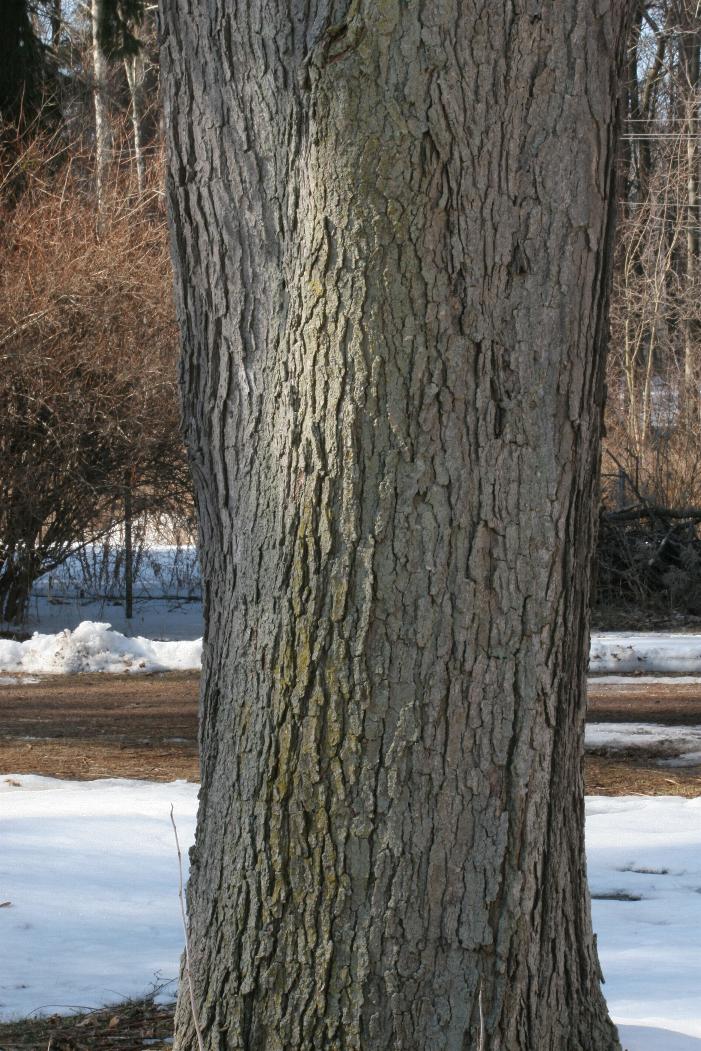 Photo: Dave Jolly Leaf scar
|
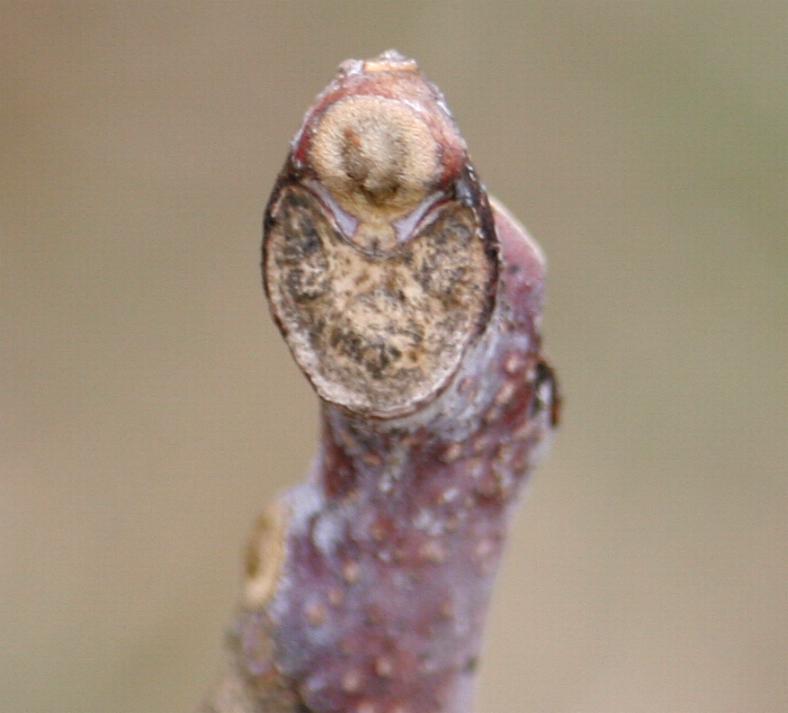 Photo: Dave Jolly
Flowering period: A relatively small window of time; June 11 - 21. The source of this data is the EARTHQUEST Plants of Ontario database (2015b).
5 Second Rule Identification: Mid-sized to tall tree (18 - 30 m) (Environment Canada 2014) with bipinnately compound leaved (the only tree in Ontario with this leaf shape), flat-topped ridges on the bark and a pink pith.
Biology and Ecology: Four Ontario populations of Kentucky Coffee-tree in Ontario contain both male and female trees and produce seeds (Craig cited in Environment Canada 2014). Reproduction at all other populations is limited to vegetative (i.e., clonal) reproduction through ramets (Environment Canada 2014). Insect pollinators include moths at night and Bumble bees (Bombus spp.) during the daylight hours (Ambrose cited in Environment Canada 2014).
Population Size: Approximately 33 populations documented, with only 23 remaining by 2010 (Environment Canada 2014). Eight hundred and ninety nine records were found in the NHIC database. Forty four records exist in the EARTHQUEST Plants of Ontario database.
Habitat & Soils: Edges of woodlands, floodplains, edges of marshes, and shallow soil over limestone (Jolly 2015a).
Threats: Kentucky Coffee-tree populations in Ontario are largely threatened by land development, Double-crested Cormorant nesting colonies (e.g., Middle Island), cuting and removal, alteration to water regime, alteration of the fire regime, planting of non-native Kentucky Coffee-trees, and terrestrial invasive plants (Environment Canada 2014).
Recovery: A COSEWIC recovery strategy was prepared in 2014 by Environment Canada. Please refer to "Recovery Stategy for the Kentucky Coffee-tree (Gymnocladus dioicus) in Ontario".
Biometrics: A relatively fast growing tree - 8 year old tree measured 3.92 m. This same tree flowered in it's 5th year.
Environmental Protection: This species is protected as a Schedule 1 tree under the federal Species at Risk Act. Designated Threatened in April 1983. Status re-examined and confirmed in November 2000.
Confusing look-a-likes: No other canopy trees resemble this species in Ontario. The leaves are considered the largest of trees in North America.
Plant Associates: Ground layer plants include; Wild Strawberry (Fragaria virginiana), Common Mouse-ear Chickweed (Cerastium fontanum, Spring Draba (Draba verna), Kentucky Bluegrass (Poa pratensis), and Bitter Wintercress (Barbarea vulgaris).
References:
Distribution: To date, current, historical and extirpated populations have been found in 3 counties, or tier regional municipalities; Chatham-Kent, Essex and Lambton. The extant Niagara region population was reported in 2003 (NHIC 2016)
$150 CAD + shipping and handling Photo: Dave Jolly for more information please click on; Ontario SAR & Rare Plants book
Senior Instructor/Ecologist/Consultant & President D. Jolly, B.Sc.
| ||
 EARTHQUEST (Canada) for the Environment
EARTHQUEST (Canada) for the Environment
